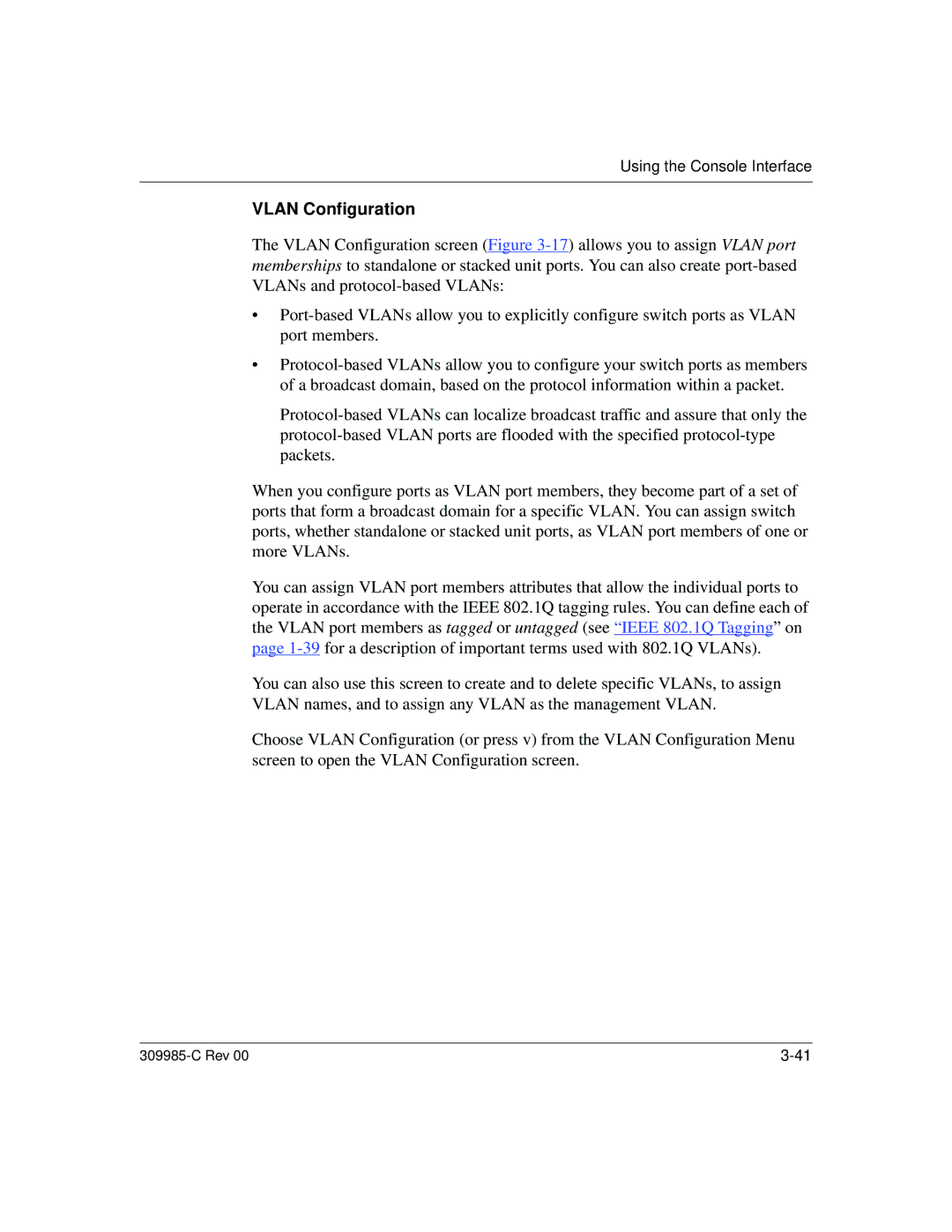
Using the Console Interface
VLAN Configuration
The VLAN Configuration screen (Figure
•
•
When you configure ports as VLAN port members, they become part of a set of ports that form a broadcast domain for a specific VLAN. You can assign switch ports, whether standalone or stacked unit ports, as VLAN port members of one or more VLANs.
You can assign VLAN port members attributes that allow the individual ports to operate in accordance with the IEEE 802.1Q tagging rules. You can define each of the VLAN port members as tagged or untagged (see “IEEE 802.1Q Tagging” on page
You can also use this screen to create and to delete specific VLANs, to assign VLAN names, and to assign any VLAN as the management VLAN.
Choose VLAN Configuration (or press v) from the VLAN Configuration Menu screen to open the VLAN Configuration screen.
|
